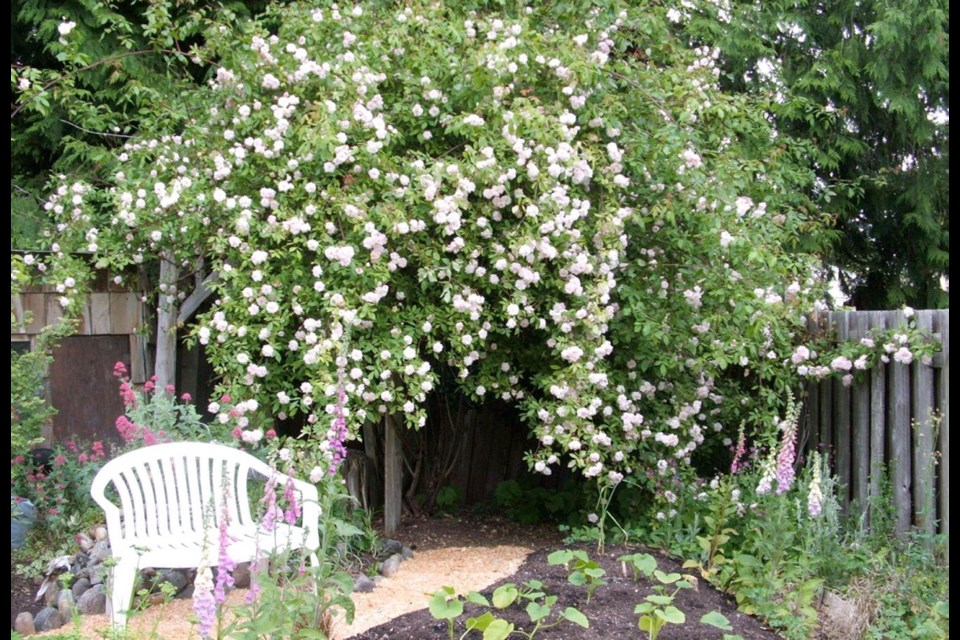Early one recent morning, I stepped out of the house to retrieve the Times Colonist and was immediately struck by the sight of a single blossom that had opened on an old, tall shrub rose growing in a bed beside the driveway. The bloom stood out against the autumn colours of nearby shrubs and the light mist that shrouded the neighbourhood.
Just as instant was a memory triggered by that rose. It was on this day, my son’s birthday, when he was a little boy. We were celebrating the occasion with my parents in Sidney. As we were about to leave after saying our goodbyes, my father reappeared from around the side of the garage with a beautiful, sweet-scented rose for us to take home. Perhaps he wanted the memory of the birthday visit to linger a little, along with the flower’s fragrance.
The memory is bittersweet. Eight weeks later my father died.
Roses remain in bloom in some of our gardens. Cherish them as memories of summer’s sweetness.
November rose care. The care we give our roses now will reward us with a pleasantly tidy winter rose garden and enhanced future health in the plants. The ones I turn to first are the climbing roses that give repeated waves of bloom from early summer through mid-autumn and sometimes beyond. They can be pruned now.
Different are rambling roses. They give just one period of bloom, in early summer. They should be left unpruned until after they finish flowering next year. Among these once-flowering ramblers are the popular Albertine, Kiftsgate and Climbing Cecile Brunner.
To begin a late autumn pruning of a repeat-flowering climbing rose, look for the three Ds: dead, diseased and damaged canes. Remove them, either at their point of origin or well below affected areas.
If a climbing rose is a well-established one, to keep the plant renewed and vigorous, look for a few of the oldest, thickest canes to remove at ground level. Then assess the remaining canes. Take out growth that is weak or awkwardly placed. Relieve any crowding by removing the weaker of two crossing canes.
Choose the healthiest younger canes to keep. Secure them to the plant’s support in a fanned-out pattern that points well-spaced, arching canes outward and as close as possible to the horizontal. Shorten side shoots growing off these framework canes to leave two or three leaves (or leaf nodes, if the leaves have already fallen). Shorten the ends of framework canes to fit the support structure.
To complete the project, remove any remaining leaves and clean up underneath the plant. Scuffle up the soil lightly, and apply a layer bout five-cm-deep of compost. These last few steps are useful disease-prevention measures.
As for bush roses, their main pruning is commonly left to winter’s end. However, a general cleanup is important for the health of the plants. This entails removal of the old leaves, which can be a source of disease transmission, cleaning beneath and around the shrubs and the application of a mulch layer. Check bush roses for overlong canes that could break in winter winds or from snow loads. Shorten them enough to reduce these risks.



